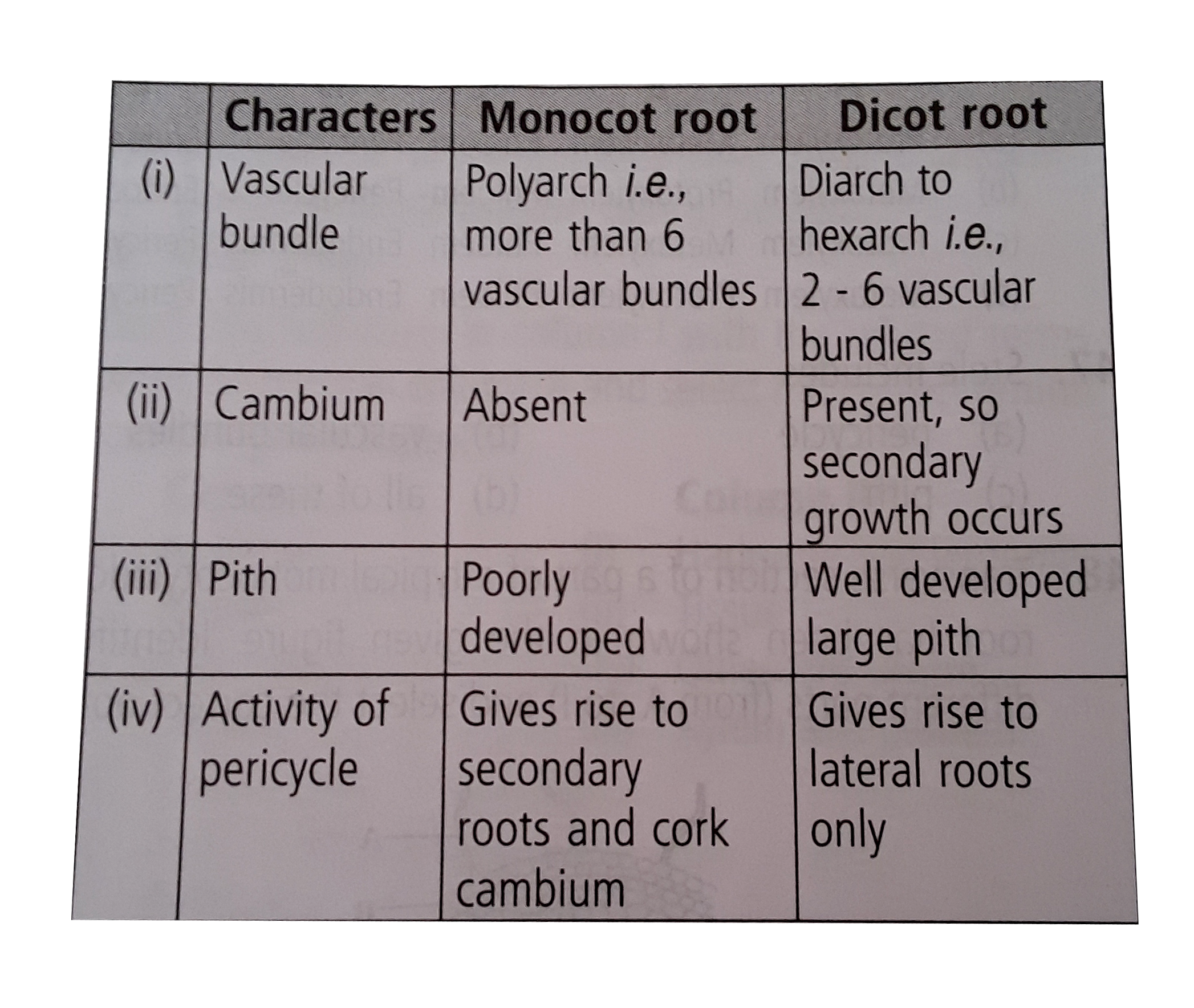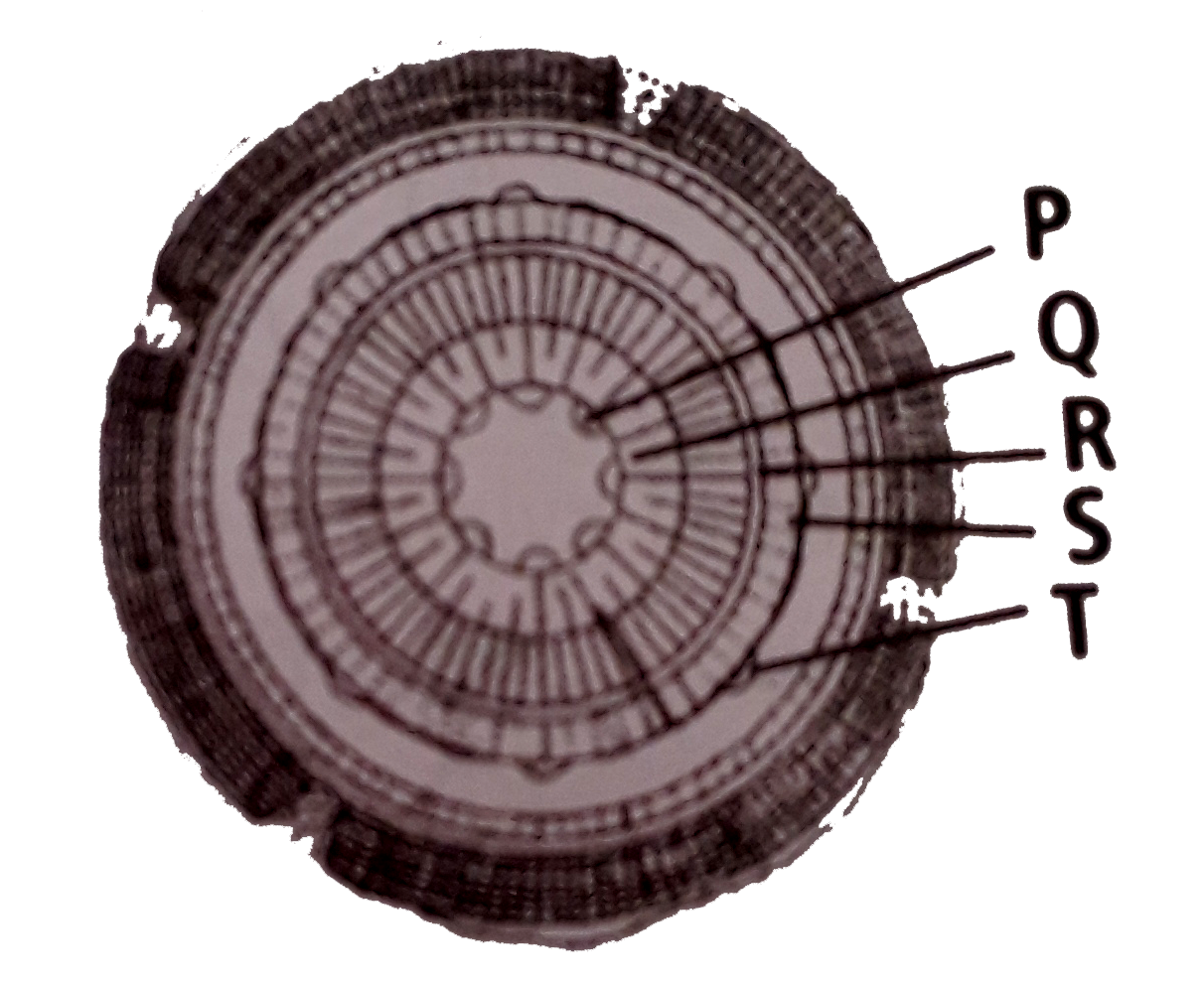Read the following option
(a) Monocotyledonous roots have fewer xylem bundles (b) Monocotyledonous roots do not show secondary growth (c) Dicot root has small pith.
Select correct statement.
(a) & (c)
(b) & (d)
(b) & (c)
(C) & (d)
The correct Answer is:C
To solve the question, we need to analyze each of the given statements regarding monocotyledonous and dicotyledonous roots:
1. Statement A: "Monocotyledonous roots have fewer xylem bundles."
- Analysis: Monocotyledonous roots typically have numerous xylem and phloem bundles arranged in a ring. Therefore, this statement is incorrect because it suggests that monocots have fewer xylem bundles when, in fact, they have many.
2. Statement B: "Monocotyledonous roots do not show secondary growth."
- Analysis: This statement is correct. Monocot roots lack vascular cambium, which is responsible for secondary growth (the formation of secondary xylem and phloem). As a result, monocots do not exhibit secondary growth.
3. Statement C: "Dicot root has small pith."
- Analysis: This statement is also correct. In dicot roots, the pith is generally not well developed and is smaller compared to that in monocot roots. The pith in dicot roots is mainly composed of polygonal parenchymatous tissue, which serves as a storage unit for food.
Conclusion:
- Statement A is incorrect.
- Statement B is correct.
- Statement C is correct.
Thus, the correct statements are B and C.
Final Answer:
The correct statements are B and C.
- Analysis: Monocotyledonous roots typically have numerous xylem and phloem bundles arranged in a ring. Therefore, this statement is incorrect because it suggests that monocots have fewer xylem bundles when, in fact, they have many.
- Analysis: This statement is correct. Monocot roots lack vascular cambium, which is responsible for secondary growth (the formation of secondary xylem and phloem). As a result, monocots do not exhibit secondary growth.
- Analysis: This statement is also correct. In dicot roots, the pith is generally not well developed and is smaller compared to that in monocot roots. The pith in dicot roots is mainly composed of polygonal parenchymatous tissue, which serves as a storage unit for food.
- Statement A is incorrect.
- Statement B is correct.
- Statement C is correct.
The correct statements are B and C.
Topper's Solved these Questions
Similar Questions
Knowledge Check
What is the fate of primary xylem in a dicot root showing extensive secondary growth?
Ait is retained in the centre of the axisBit gets crushedCay or may not get crushedDit gets surrounded by primary phloem
Following table summarises the differences between a monocot root and a dicot root. Identify the incorrect differences and select the correct optionA(i) and (iii)B(i) and (iv)C(iii) and (iv)D(ii) and (iii)
Select an incorrect statement regarding secondary growth in dicot stem or root
View SolutionExarch and polyarch vascular bundles occur in
(a) Monocot stem
(b) Monocot root
(c) Dicot stem
(d) Dicot root
View SolutionWhich of the following tissue makes phellogen during the secondary growth in dicot roots?
View Solution
Identify P,QltRltS and T in the given T.S. of dicot stem showing secondary growth and select the correct options
View SolutionA characteristic feature of a transverse section of an old dicot root is that it show secondary xylem
View SolutionConsider the following statement
(A) In a dicot root, the vascular bundles are collateral and endarch
(B) The inner most layer of cortex in a dicot root is endodermis
(C) In a dicot root, the phloem masses are separated from the xylem by parenchymatous cells that are known as the conjunctive tissue
Of these statement given above
View Solution
